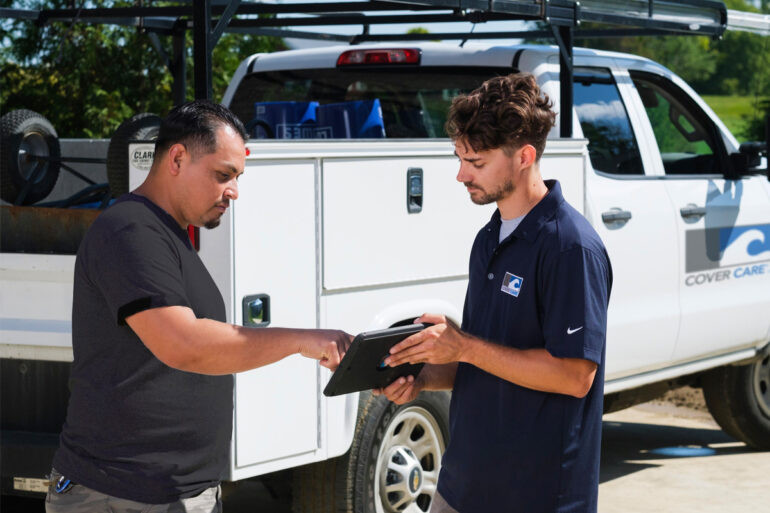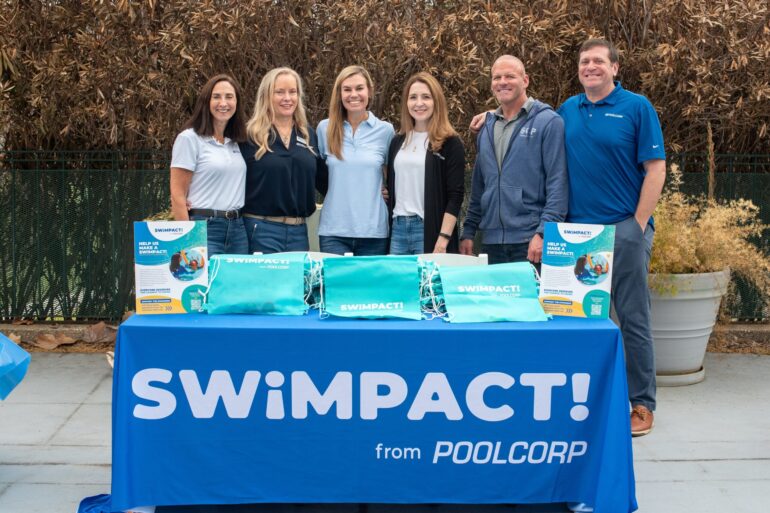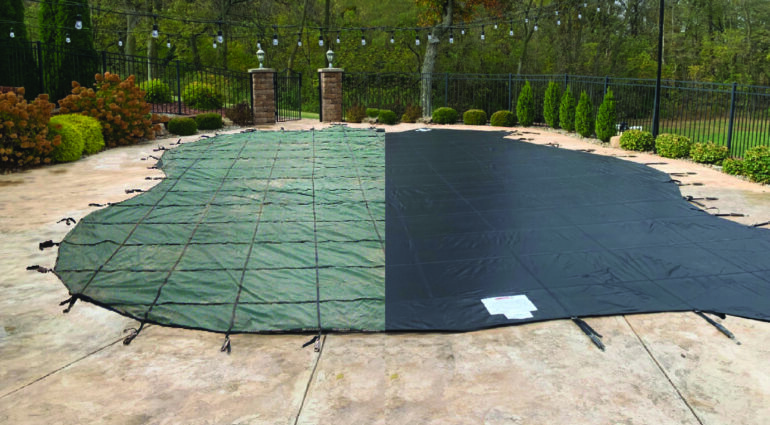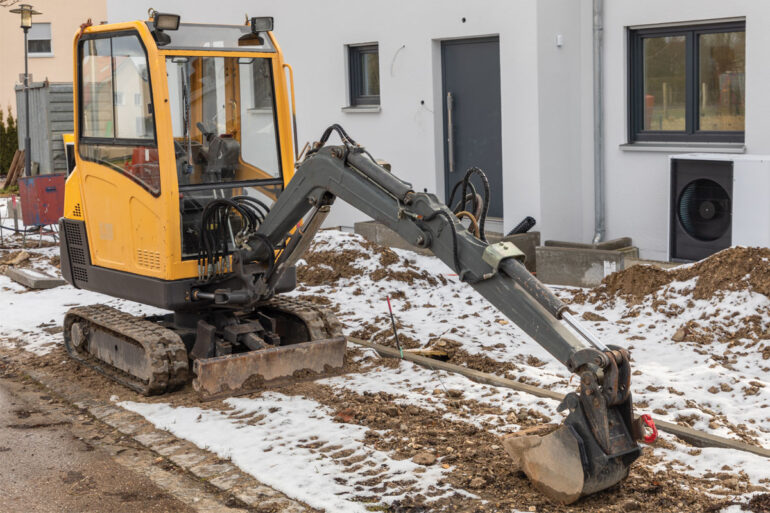ICF Construction Update
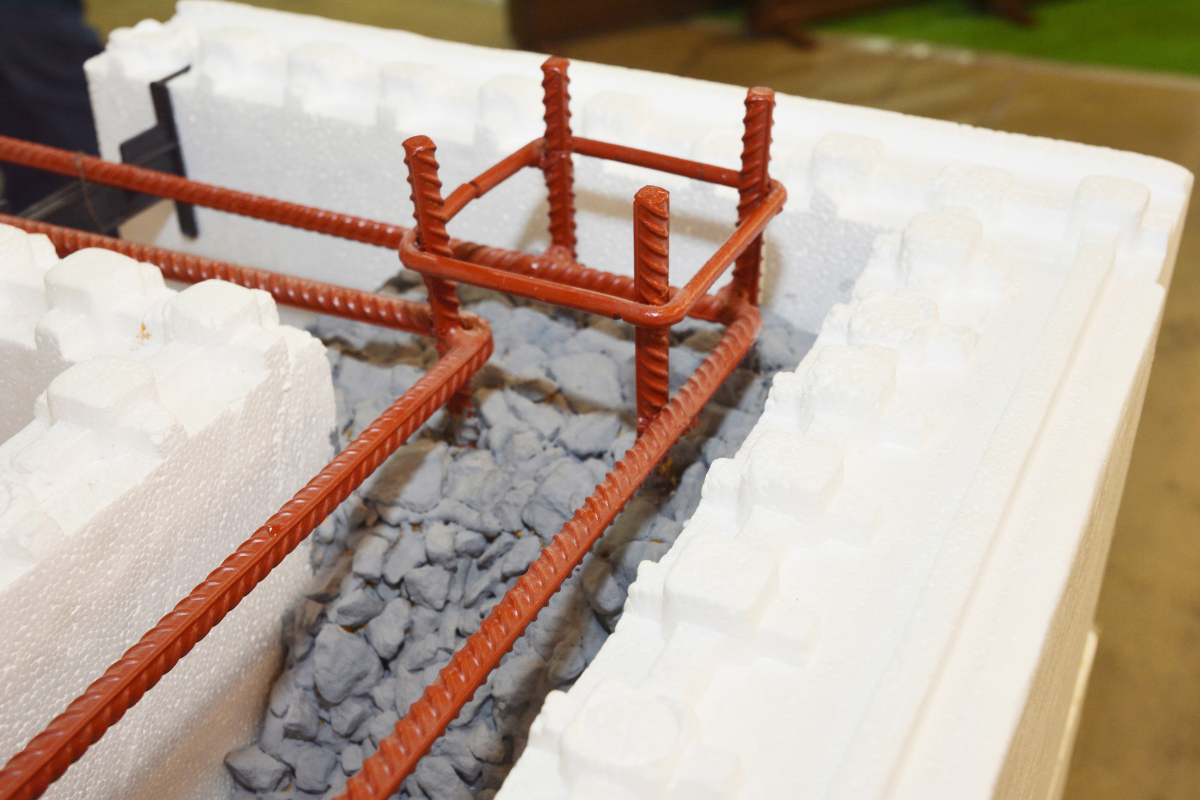
In the May/June 2023 edition of PoolPro, we talked to Steve Mercer about the intricacies of ICF pool construction. It’s an area that’s changing quickly, Mercer says, and he’s back with updated tips for pool pros.
Concrete cures stronger in ICF forms because water does not escape the forms like in traditional wood, steel or aluminum versions. This allows the concrete chemical reaction to complete with only the water that was added at the concrete plant. ICF forms can also shield concrete from less-than-ideal weather conditions when it’s poured (hot or cold) to allow the concrete to cure.
Normally, ICF pools use steel rebar for horizontal and vertical concrete reinforcement, but our company uses Helix 5-25, a new type of micro rebar. It’s a coated, twisted steel coil that is approximately 1.25 inches long and is added to the concrete mix at the plant. Helix is placed randomly throughout all the concrete and reinforces the walls, floors and footers, which increases the flexural strength of concrete by 300% and increases ductility by up to 30%.
For vertical concrete reinforcement, we use MST-Bar, a fiberglass rebar that is three times stronger than steel rebar. Concrete adheres to fiberglass rebar better than it does to steel so you get stronger and better reinforcement, and fiberglass rebar never rusts. Since the rebar arrives in the concrete, there is no rebar for workers to trip over during the finishing process on flat concrete work. We also use a concrete additive called Hycrete, which waterproofs the concrete at the molecular level and coats the rebar in the concrete. Should a crack occur and water incursion ensue, the water never touches the steel rebar. Also, any crack within the concrete becomes self-healing within 50 days.
Several people in the 2023 article made claims about a product called Sidercrete. While Sidercrete may work in Florida, there are many documented cases of Sidercrete not applying to Styrofoam walls of ICF pools, especially in colder climates. The ICF Manufacturer Fox Blocks has worked with and performed extensive testing on Basecrete and recommends Basecrete for waterproofing Styrofoam walls. POOLCORP now offers a 10-year warranty on Fox Blocks and Basecrete installed on them in a pool installation.
Fox Blocks offers an energy stick that can be inserted inside the core of an ICF Fox Block. Each energy stick adds R-9 to a wall. By choosing a wider core block and adding three energy sticks, insulation is greatly increased in the outside wall where it is needed the most.
After the concrete is poured, we remove the inner ICF foam wall, exposing the concrete core of the wall and finish the pool with Skin Microplaster. The wall and the concrete floor are finished like a normal concrete pool from there.
We use AMPEX insulated floor panels below the concrete floor and install PEX radiant heat tubing in the dimples of the AMPEX floor panels before pouring the concrete floor. We also use a Blue Square in-floor cleaning system in the floor and install all our mechanicals in an insulated ICF mechanical box located below the pool deck. By using radiant heat under the concrete floor, the floor becomes a giant radiator, and the water in the radiant heat system never mixes with the water of the pool. Once the oxygen is worked out of the radiant heat system, the heat exchanger of the pool heating system will last for decades.
We also use a cartridge-based pool filter. These filters do not use electricity to back flush the filter, nor does the pool lose water during the backflush or change pool chemistry like sand filters do. We also use a retractable pool cover from Aquamatic — the Hydromatic Pool cover — to reduce debris in the pool.
An important note about in-floor cleaning systems: Installing your pool jets in the floor means whatever sanitizing system you choose will inject those sanitizing agents at floor level. Since most of these agents are lighter than water, they will naturally rise to the surface. By injecting from the floor, you will use substantially less sanitizing agents and the whole water column is treated.
We use Poolside Tech’s The Attendant for pool control and a sanitation system from Clearwater Pools Systems, which has a combination of copper and silver ionization and ozone injection, along with CO2 gas injection to control pH. A pool with this system only needs about three gallons of chlorine per year, and all the chloramines in city water introduced to the pool are broken down within two hours of entering the pool. The Attendant knows when your pool cover is closed and will shut down the CO2 and ozone injection. It monitors the weather forecast and will speed up or slow down the pool pump based on that data.
The Attendant also learns your pool’s hardware’s capabilities; if you tell it you want to go swimming at 6 p.m., it knows when to start heating the water to provide you with the best temperature when you hop in. We also add flow switches to the pump, cartridge filter and debris canister. Should any one of these drop below the monitored operating spec, the pool owner and the pool tech will get a message from The Attendant of a potential problem.
Because your pool drain also doubles as your main pool return, and your pool jets of the Blue Square in-floor cleaning system are in the floor and all your mechanicals and piping are underground, there is no need to shut the pool pump down with or without heat during the winter unless you are north of Indianapolis. We use Skin Microplaster to finish our pools. Skin is working on a spray-on application system and Fox Blocks is working on a new web tie that will allow you to remove the inner Styrofoam wall of an ICF block without having to pry it off after the concrete is poured and set.
Steve Mercer
Preston Green


